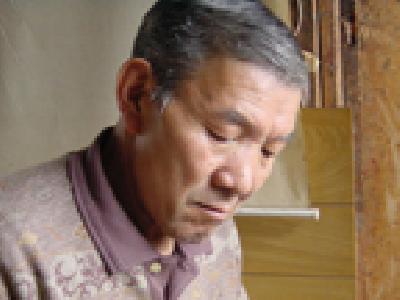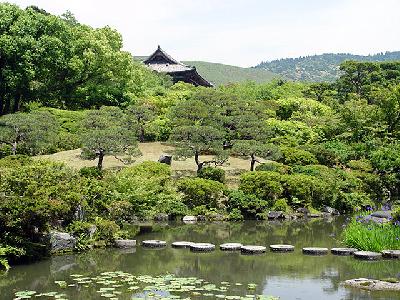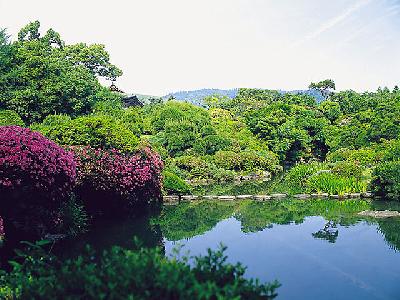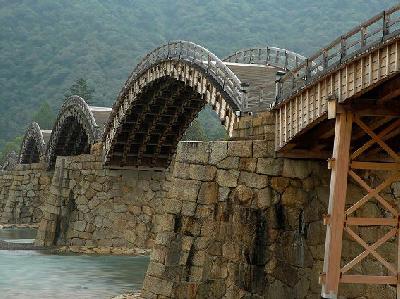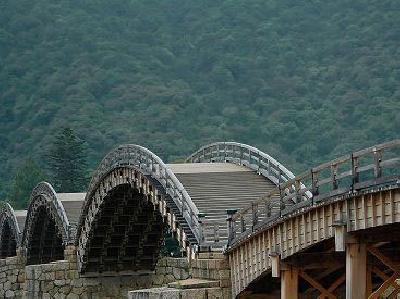Kintai Bridge is a wooden arched bridge, built in the Edo period near the city of Iwakuni in Yamaguchi Prefecture. It is called one of the three major bridges in Japan, which include Shin Bridge in Nikko and Saru Bridge in Kai. Its sophisticated and unique shape is highly evaluated.
Before the bridge became what it is now, all the parts, including the beams were wooden and were not strong enough to withstand each flooding of the Nishiki River.
The head of the Iwakuni clan, Kikkawa Hiroyoshi, first began construction of a bridge strong enough to withstand floods. At that time, he learned about a six-arched bridge from a naturalized monk from Min (China). At the same time, he decided to use stones to make the bridge strong enough. Finally, in the first year of the Enpo period (1673), the five-arched bridge, the Kintai Bridge was completed. But the next year, a flood washed it away. To make the base of the bridge stronger, flagstones were placed at the arch supports, Although it is true that some parts continued to be washed away in floods, most of the bridge remained .
You can see cherry blossoms in spring and red leaves in autumn; many people visit here throughout the year.


